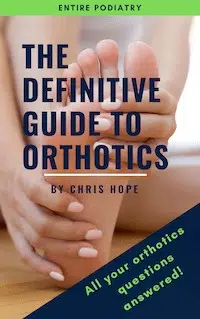A tailor’s bunion or bunionette is similar to a bunion (link) but it is a bump on the outer part of the foot at the base of your little toe. The name ‘tailor’s bunion’ comes from hundreds of years ago when tailors worked sitting cross-legged. This position pushed the side of the little toe into the floor, hence making them more likely to develop these bunions.
Tailor’s bunions can be very painful, but at Entire Podiatry, we can generally relieve your bunion pain without surgery.
Symptoms of Tailor’s Bunions
A tailor’s bunion is actually a multifaceted deformity of the foot that involves:
- A bump on the outside of the foot (at the base of the fifth metatarsal head)
- Swelling and redness over the bump
- Outward angulation of the fifth metatarsal bone
- Inward rotation of the little toe
Causes of Tailor’s Bunion
The Tailor’s bunions cab be caused by a number of factors. Often the ligaments that hold the bones of the foot together are more flexible than normal. This allows the fifth metatarsal bone to gradually move outward and the little toe to turn in near the fourth toe. This can be due to:
- Aging
- Genetics
- Flat feet
- Injury
The bony lump can be irritated and can be aggravated by the following:
- High heels
- Damage to the outside of the foot
- Poor foot mechanics. Such as excessive pronation (rolling of the foot), a wide forefoot or people who put weight on the outside of the foot (supination).
- Arthritis of the fifth toe joint
- Poorly fitting footwear that pushes the fifth toe inwards
Treatment for Tailor’s Bunion
Treatment for tailor’s bunions at Entire Podiatry will initially be conservative and involve measures to reduce the pain before considering surgery. This would typically involve reducing pressure and load on the painful area with using orthotics and changes in your shoe choices. Strengthening exercises may also be prescribed by your podiatrist with the goal to redistribute load evenly across the front of the foot.
Orthotics for Tailor’s Bunions
The objective of orthotics is to transfer pressure from the area of the tailor’s bunion and onto the arch of the foot.
Shoes for Tailor’s Bunions
Shoes are also an important part of treatment for a tailor’s bunion. At Entire Podiatry we can recommend shoes with a wider toebox so that there is more room and less pressure on the fifth metatarsal head. For very large tailor’s bunions we have stretchable shoes which are elastic and breathable. These stretch to conform to the curves of the foot, accommodate deformities and remove pressure on tailor’s bunions.
Separators, Socks and Pads
Silicon toe separators can be used between the fourth and fifth toes as this may help to decrease pressure. Using a pad over the deformity can also be used. There are pads which are designed to protect the bunion and to slightly separate the 4th and 5th toes. Wearing appropriate socks can also help reduce rubbing on the Tailor’s bunion. At Entire Podiatry we do not recommend cotton socks as they cause a lot of friction. Using socks with no seam over the tailor bunion, low friction and cushioning is the best choice.
- Fast Pain Relief & All-Day Comfort – Say goodbye to tailor’s bunion pain with our soft gel bunion pads! This set of six slips onto your pinky toe, easing discomfort, friction, and calluses. Perfect for breaking in new shoes or soothing sore toes.
- Low-Profile, All-Day Wear – Designed for any foot and shoe, these bulk-free correctors provide discreet relief, even if you're on your feet all day.
- Soft, Durable Protection – Made from flexible gel, our cushions stay comfortable for hours, are easy to clean, and reusable.
- For Men & Women – Stretchy and discreet, these bunionette pads fit any foot and work with heels, boots, or any shoe!





